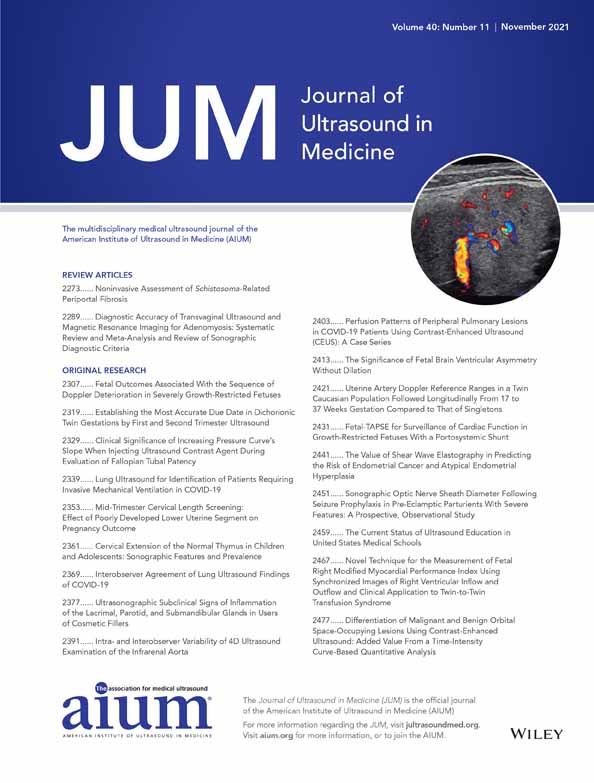Differentiation of Malignant and Benign Orbital Space-Occupying Lesions Using Contrast-Enhanced Ultrasound
Added Value From a Time-Intensity Curve-Based Quantitative Analysis
Abstract
Objectives
To evaluate the value of time-intensity curve (TIC) analysis of contrast-enhanced ultrasound (CEUS) signal to differentiate malignant from benign orbital space-occupying lesions.
Methods
The CEUS signal of 111 patients with orbital space-occupying lesions was retrospectively analyzed using SonoLiver software. TIC-related parameters such as the arrival time (AT), rise time (RT), time to peak (TTP), maximum intensity (IMAX), mean transit time (mTT), slope of the increase (RS), and slope of the decrease (DS) were compared between the malignant and benign groups. Receiver operating characteristic (ROC) curve analysis was used to acquire the cutoff values of these parameters for differential diagnosis.
Results
TIC patterns were characterized by fast increase and fast decrease in signal intensity in the malignant group, fast increase and a slow decrease in signal intensity in the benign group. The differences in the IMAX, RS, DS, mTT, TTP, and RT between the 2 groups were statistically significant (p <.01), while the difference in the AT were not (p = .672). ROC curve analysis showed that IMAX = 427.20, DS = 34.72, and mTT = 33.55 were the best cutoff values for differential diagnosis of malignant and benign space-occupying lesions. The accuracy rate of CEUS visual evaluation for differential diagnosis was 66.67% (74/111), while TIC quantitative analysis could effectively improve the accuracy to 89.19% (99/111).
Conclusions
TIC analysis can improve CEUS efficiency to differentiate malignant from benign orbital space-occupying lesions.




